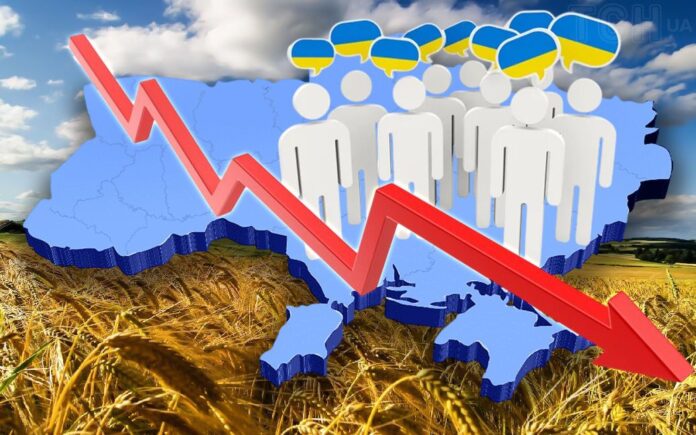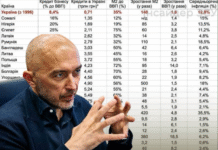
After years of war, Ukraine is facing a demographic crisis. How many of us are left, how the population structure has changed, and what can save demographics - analytics UkrMedia.
1. Population of Ukraine in 2025
According to estimates Institute of Demography of the National Academy of Sciences of Ukraine, As of October 2025, the country is home to about 29.8 million people (excluding the occupied territories).
By the time the full-scale invasion began in 2022, the population was over 41 million.
Over 7.5 million Ukrainians left the country as refugees, and about 4 million are still abroad.
2. Key demographic trends
| Indicator. | 2021 | 2023 | 2025 (estimate) | Shift (%) |
|---|---|---|---|---|
| Population (million people) | 41,0 | 32,6 | 29,8 | -27% |
| Number of births (thousand) | 273 | 187 | 160 | -41% |
| Number of deaths (thousand) | 616 | 585 | 520 | -15% |
| Natural increase (thousand) | -343 | -398 | -360 | - |
| Migration balance (thousand) | -110 | -220 | -180 | - |
Sources: State Statistics Service, National Academy of Sciences of Ukraine, UNFPA (updated in October 2025).
3. Birth rate: historic low
In 2024, the following children were born in Ukraine less than 160 thousand children - is the lowest rate in the history of independence.
For comparison, in 2012, more than 520 thousand infants.
The reasons for the fall are obvious:
War and evacuation of women of reproductive age;
uncertainty about the future;
economic instability;
shortage of medical services in the frontline regions.
Experts predict that by 2030, the birth rate will increase by only 10-15%, The government will not be able to provide significant incentives to families unless there is a substantial government programme.
4. Population ageing
The average age of Ukrainians today is 41.3 years, and it continues to grow.
The share of people over 60 years old is over 25%.
This creates Additional pressure on the pension system and requires changes in employment policy.
According to the World Bank, by 2035 Ukraine could become one of the oldest countries in Europe, The losses will not be compensated by migration or the return of young Ukrainians.
5. Migration: the return of Ukrainians
According to surveys Kantar and KSE Institute, about 38% Ukrainians abroad plan to return after the end of the war.
Key motives:
desire to be close to family;
restoring jobs;
stability and security.
However, approximately 30% young professionals have already integrated into the EU and are considering permanent residence.
6. Possible scenarios of demographic recovery
| Scenario. | Description. | Estimated population in 2035. |
|---|---|---|
| Optimistic | Return of 3 million refugees, higher birth rates, economic growth | ~35 million |
| Basic | Returns of 2 million, moderate birth rate growth, low emigration | ~32 million |
| Pessimistic | Returns of less than 1 million, prolonged war, migration outflow of young people | ~28 million |
Forecast of the Institute of Demography of the National Academy of Sciences of Ukraine, 2025.
7. 7.
Ukraine is facing one of the most profound demographic challenges in its history.
The population will need to recover:
large-scale family support programmes;
reforms in healthcare and education;
incentives for citizens to return from abroad;
modernisation of migration policy.
Without these steps, by the 2030s there could be shortage of labour resources and an excessive burden on the social system.



